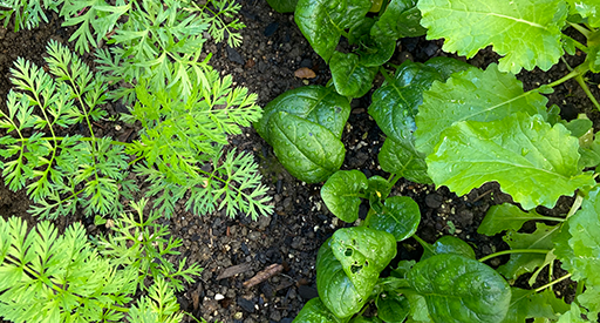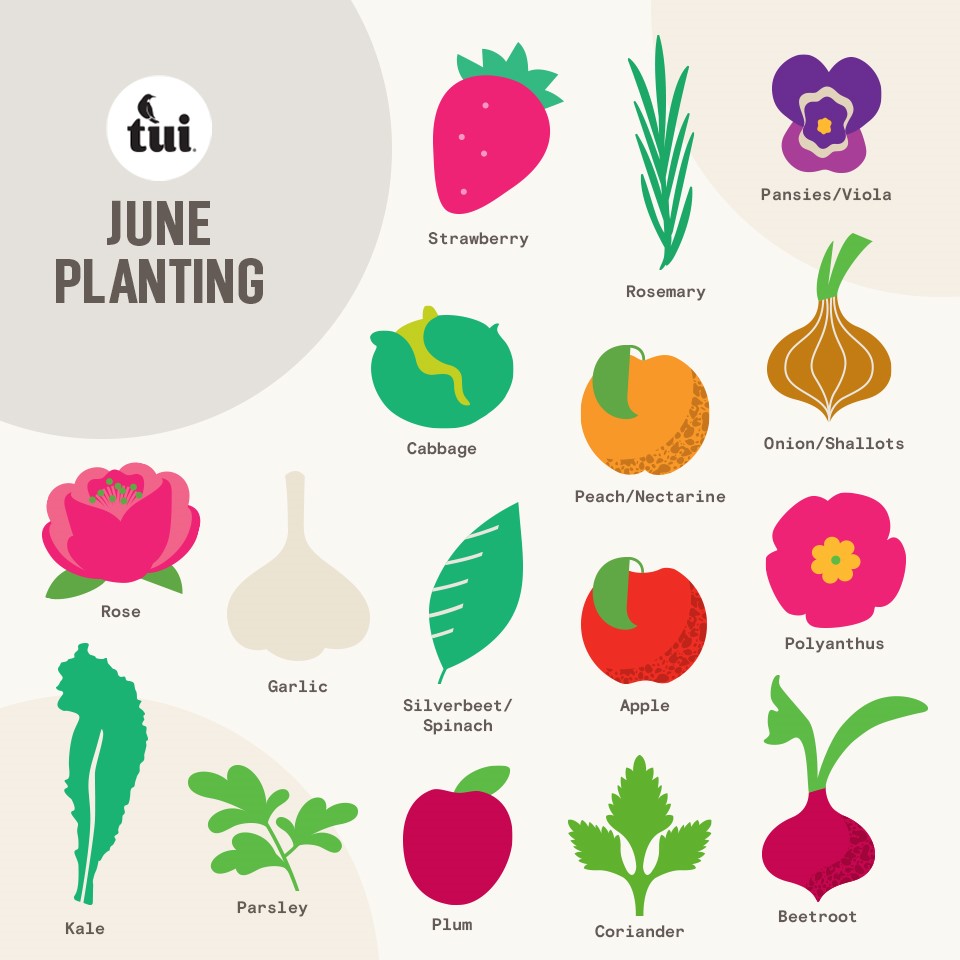
This month is a great time to plant fruit trees and winter veges for a continuous supply.
It's also time to begin thinking about the next season and the crops you might want to grow and harvest through spring and summer.
What to plant in June

In the vegetable garden
Plant
In the vege patch it's garlic planting time, with garlic traditionally planted on the shortest day for harvest on the longest day in December. Keep planting winter staples including brassicas, beetroot, leafy greens and herbs.
This month you can plant the following: Broccoli, cabbage, carrot, coriander, garlic, kale, lettuce, mesclun, onion, parsley, parsnip, peas, radish, rhubarb, rocket, silverbeet, spinach, rosemary, thyme.
For more veges to plant in your region, check out our Planting Calendar here.
Harvest
Beetroot, bok choi, broad beans, broccoli, cabbage, cauliflower, carrots, celery, kale, lettuce, mesclun, onions, parsnip, shallots, radish, rocket, silverbeet, spinach.
Check out our recipe section for tasty recipes for your harvests.
Maintenance
- Parsnips and yams - they can be left in the ground until you need them.
- Rhubarb - lift and divide older rhubarb crowns while the plants are dormant.
- Feed vegetables with Tui Vegetable Food or Tui NovaTec Premium fertiliser to give them the nutrients they need to grow.
- Apply Tui Organic Seaweed Plant Tonic to help plants cope with the cooler weather and frost.
In the fruit garden
All deciduous fruit trees including apples and pears can be planted now while the plants are still dormant and the widest selection is available in-store. Most pip and stone fruit will now be losing their leaves and going into a dormant state for the next few months. Remember to tuck into the preserves from the summer and autumn harvests!
- Strawberries can be planted now - research shows that planting strawberries in New Zealand's winter temperatures will produce a higher yield in summer.
- Plant evergreen frost hardy fruits such as feijoa and Chilean guavas. Remember, fruit requires a position in full sun and shelter from the wind is preferable.
- Aphids, whitefly and scale insects may be about. Blast off with a hose, apply warm soapy water, or select a suitable spray from your garden centre.
- Collect and compost any rotting fruit from under fruit trees.
- Check harvested fruit to make sure nothing is rotting, remove fruit as soon as its starts to decay. Rot can quickly spread throughout a whole harvest within a week or two.
- Keep areas around fruit and fruit trees weed free. Add a layer of Tui Mulch & Feed around the base of fruit trees, to keep the soil warmer over the winter months and help suppress weeds.
In the flower garden
Brightly coloured polyanthus, primula, pansies and violas can be planted now, and new season roses will be appearing in-store, so make sure you check these blooms out.
- Apply Tui Bulb Food to existing bulb plantings.
- Apply a side dressing of Tui NovaTec Premium fertiliser to pots and planters.
- Add thick layers of Tui Mulch & Feed or Tui Pea Straw Mulch to garden beds and pots to conserve water, reduce weeds and add valuable nutrients back to the soil. It also creates a tidy and cared for look.
- Aphids, mites and whitefly are all still moving about now, particularly if the weather is still warm. Be vigilant, if infestations are small blast them off with the hose. If the infestation is larger spray with with a suitable insect spray.
- Put frost cloth or protection around delicate plants.
- Deadhead or pinch out old flowers of snapdragons, stocks, polys and pansies to encourage a new flush of flowers.
- Begin pruning in mild areas, and hold off pruning in cold areas until July or August.
- Collect seeds from poppy, wild flowers and other flowering annuals to grow your own free flowers in spring.
- Lift and divide perennials such as dahlias, echinacea, delphinium and hostas.
Post a comment
June Gardening Guide Comments
Really great advice every time about gardening
Joy Cullen